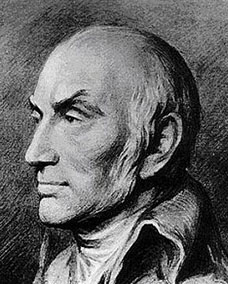Nicolas Appert, a French chef and a confectioner is the “father of canning”, and was the inventor of airtight food preservation which is still applicable today in the food industry. He developed a heating process in which canned foods (e.g. milk, meat, drinks, and vegetables) could be preserved and prevented from spoilage by microbial fermentative action. His method provided a system in which food and other like-products could be sealed in a canned medium for adequate preservation until use.
Appert’s crude canning system is still being used till date in the food and beverage industries to can or preserve foods but with some modifications; and his method has significantly contributed to the control of food spoilage and the transmission of food borne diseases through canned food products. His crude method of canning foods included the use of large glass bottles that contained the foodstuff, and the bottles were sealed with corks.
Appert’s method shows that sealing foodstuffs in canned containers before heating them reduces the effect of air in causing food spoilage; and that both heating and boiling slows down food spoilage by inhibiting food borne pathogens. He applied Lazzaro Spallanzani’s observation in 1805 for preservation of foods by enclosing them in airtight containers and then heating the containers, a process called “appertization”.
Appertization is a method of food preservation in which certain types of food are exposed to a temperature/regime which renders safe for the consumer and microbiologically stable for extended or indefinite periods of time on subsequent storage in hermetically sealed containers at temperatures below 40oC. In honour of his work, canning is sometimes called “appertization”, and this process is quite different from pasteurization – which is the form of heat treatment (especially at temperatures below 100oC) that kills food spoiling microorganisms in milk and other dairy products.
Pasteurization unlike appertization (which uses a lower temperature to sterilize food products) heats food products (particularly milk) at a high temperature that is lethal for food-borne pathogens (e.g. Salmonella species) to thrive. However, appertized foods are not necessarily sterile as are pasteurized food products; and this is why foods sterilized by appertization are always kept under refrigeration temperatures for proper preservation. Nicolas Appert was able to preserve highly perishable foods by this process, and canning (which it was later called) was in use in food making even much before its scientific principles were clearly understood.
Nicolas Appert had no formal education but his many years of trials- and errors- at his confectionary in France on how best to preserve food paved way for him when he was challenged by the 12, 000 Franc prize offered by the French government to anyone who could develop practical means of preserving perishable foodstuffs. This happened at a time when France led a war against her neighbour’s under its leader, Napoleon Bonaparte in the 18th century.
Due to his lack of formal education, Appert had no scientific idea about the chemistry and biology of his invention, appertization (which is now commonly called canning). It was Louis Pasteur that later explained the rationale behind Appert’s method of preserving foodstuffs and why it worked.
References
Barrett J.T (1998). Microbiology and Immunology Concepts. Philadelphia, PA: Lippincott-Raven Publishers. USA.
Beck R.W (2000). A chronology of microbiology in historical context. Washington, D.C.: ASM Press.
Brooks G.F., Butel J.S and Morse S.A (2004). Medical Microbiology, 23rd edition. McGraw Hill Publishers. USA. Pp. 248-260.
Chung K.T, Stevens Jr., S.E and Ferris D.H (1995). A chronology of events and pioneers of microbiology. SIM News, 45(1):3–13.
Summers W.C (2000). History of microbiology. In Encyclopedia of microbiology, vol. 2, J. Lederberg, editor, 677–97. San Diego: Academic Press.
Talaro, Kathleen P (2005). Foundations in Microbiology. 5th edition. McGraw-Hill Companies Inc., New York, USA.
Wainwright M (2003). An Alternative View of the Early History of Microbiology. Advances in applied microbiology. Advances in Applied Microbiology, 52:333–355.
Willey J.M, Sherwood L.M and Woolverton C.J (2008). Harley and Klein’s Microbiology. 7th ed. McGraw-Hill Higher Education, USA.
Discover more from #1 Microbiology Resource Hub
Subscribe to get the latest posts to your email.



